10 great Spring (aka Teespring) alternatives with pros & cons

What are the most profitable products to sell online in 2025?
Statista suggests merchandise, including items like mugs, hoodies, and footwear. To start, consider selling print-on-demand products, especially with the increasing trend in online shopping.
What are the benefits of print-on-demand? Using a POD platform eliminates inventory, printing, and shipping concerns.
If you’ve explored print-on-demand (POD) platforms, Teespring (now Spring) may have caught your attention. And that’s not a surprise as it’s a free eCommerce platform designed to empower creators to monetize their content by selling custom products (digital or physical). The platform integrates seamlessly with major social media channels and is fairly easy to use. Regarding POD, Spring handles all aspects of order fulfillment, from production to shipping and payments. Additionally, creators set their own prices and retain 100% of the profit above the base cost of each product.
However, despite its convenience, you might run into some limitations that leave you searching for alternatives:
- Limited free store options. Spring lets you build a free custom store, but it only remains free for print-on-demand products, while digital sales incur a 20% fee.
- Strict Boosted Network requirements. The Boosted Network helps promote products, but eligibility requires prior sales, verified payouts, and a minimum price ($45 for digital, profit margin threshold for physical).
- Costly digital product sales. Unlike many other POD platforms, sSpring supports digital product sales but still takes a 20% commission, which can be expensive compared to other platforms.
- Slow payments and limited payout options. Payouts take 7-10 days, and you’re restricted to PayPal or Payoneer, which may not be ideal for everyone.
- Lack of advanced eCommerce features. Spring lacks customer data insights, automated email marketing, and customizable sales tracking, making it less appealing for serious sellers.
Are there any Teespring alternatives? This article explores nine alternatives (the top competitors of Teespring), including Sellfy. Standout features of Sellfy include no payout threshold, advanced store customization, and built-in email marketing.
So, let’s find out how to choose the best Teespring alternative.
1. Sellfy
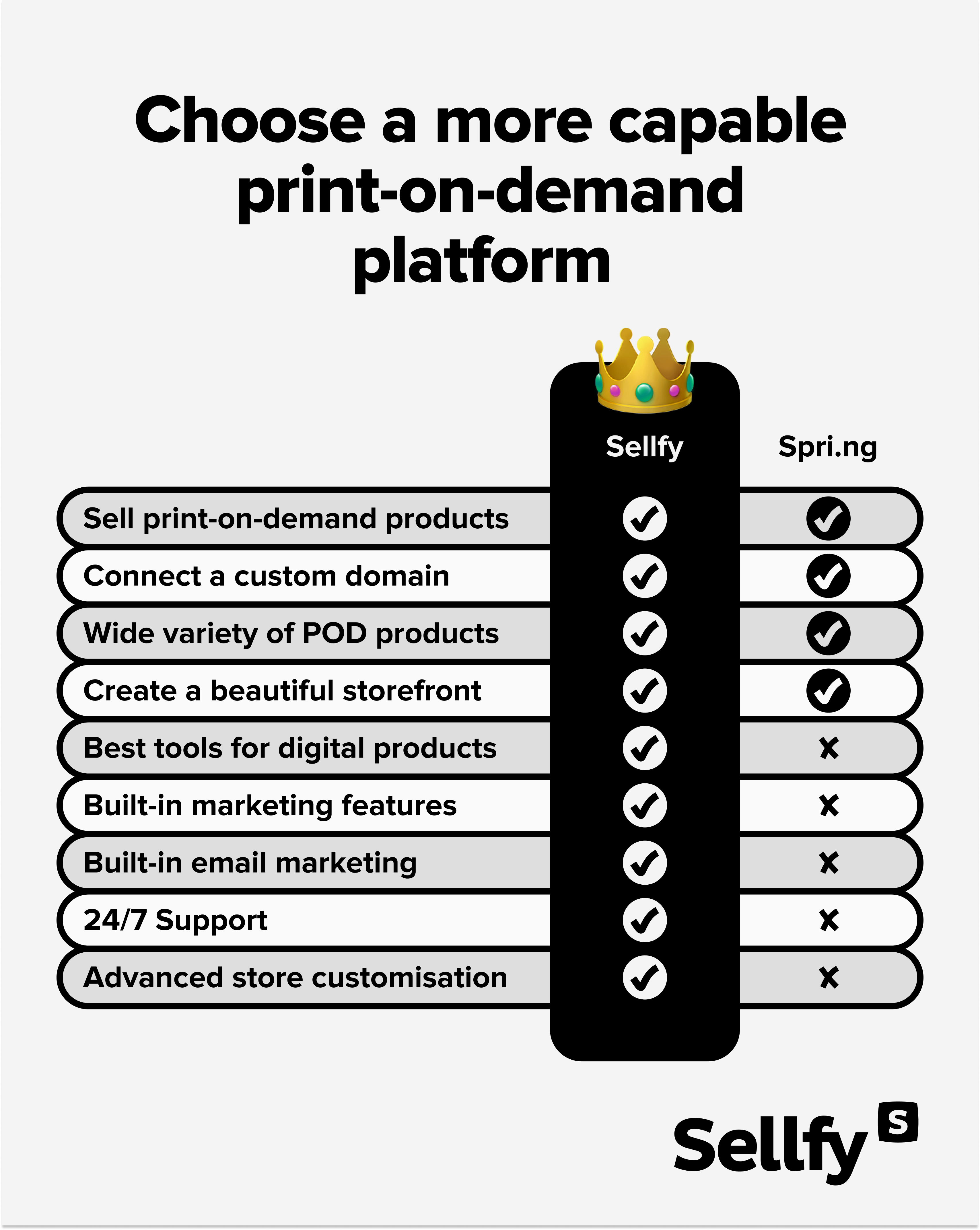
Sellfy is an easy-to-use eCommerce solution with a good deal of features made for selling custom products such as print-on-demand merchandise.
Established in 2011, it has quickly taken the eCommerce world by storm—so much so that even users across other POD sites have converted to Sellfy. One of the platform’s main attractions is its extremely diverse range of product types that you can sell—from digital items and subscriptions to merchandise (mugs, hoodies, etc.). With Sellfy, you can easily make your own merch that stands out and sells well.
Unlike most eCommerce platforms and marketplaces, Sellfy is completely unique in giving its sellers the chance to white-label their brand and receive instant payouts. Sellfy’s setup process is also as smooth as its user interface. You can literally build a mobile-friendly online store in less than five minutes. This makes Sellfy one of the best alternatives out there!
Target audience: Creators (anybody who wants to sell merch, subscriptions, and digital or physical products online).
Pros:
- No startup fees
- Worldwide printing & shipping
- Instant payouts
- Unlimited bandwidth & no minimums
- Website integration or store embed
- Embed shopping cart or “buy now” buttons
- Advanced VAT & tax settings
- Multiple currencies
- No hidden fees
- In-built marketing tools, SEO & analytics
- Diverse range of products
- White-label
- Easy & smooth 5-minute setup
- Sleek mobile-first design
- Premium customer support
Cons:
- Limited store customization options & app integrations
- No advanced product filtering or sorting options
2. Printful
Printful has been one of the most popular print-on-demand companies for a couple of years now. They offer a solid solution with tons of useful features that can help you start and scale your POD business—from a great product selection and a powerful mockup generator to custom services like logo design.
On top of that, Printful lets you brand your products and packaging for an additional cost.
Sounds too good to be true? The catch is that you can’t use Printful as a standalone solution as you have to integrate it with an existing eCommerce store. The good news is that Printful integrates with 15+ eCommerce platforms and marketplaces.
Best for: Business owners with an existing eCommerce store.
Pros:
- Wide POD product selection
- Integration with major eCommerce platforms
- Easy to use
- Worldwide printing and shipping from warehouses all over the world
- Guarantee policy for lost or damaged packages
- 24/7 customer service
- White-label and product personalization
Cons:
- Not a standalone solution
- Big product base cost
- No returns or refunds unless products are damaged or lost
3. Redbubble
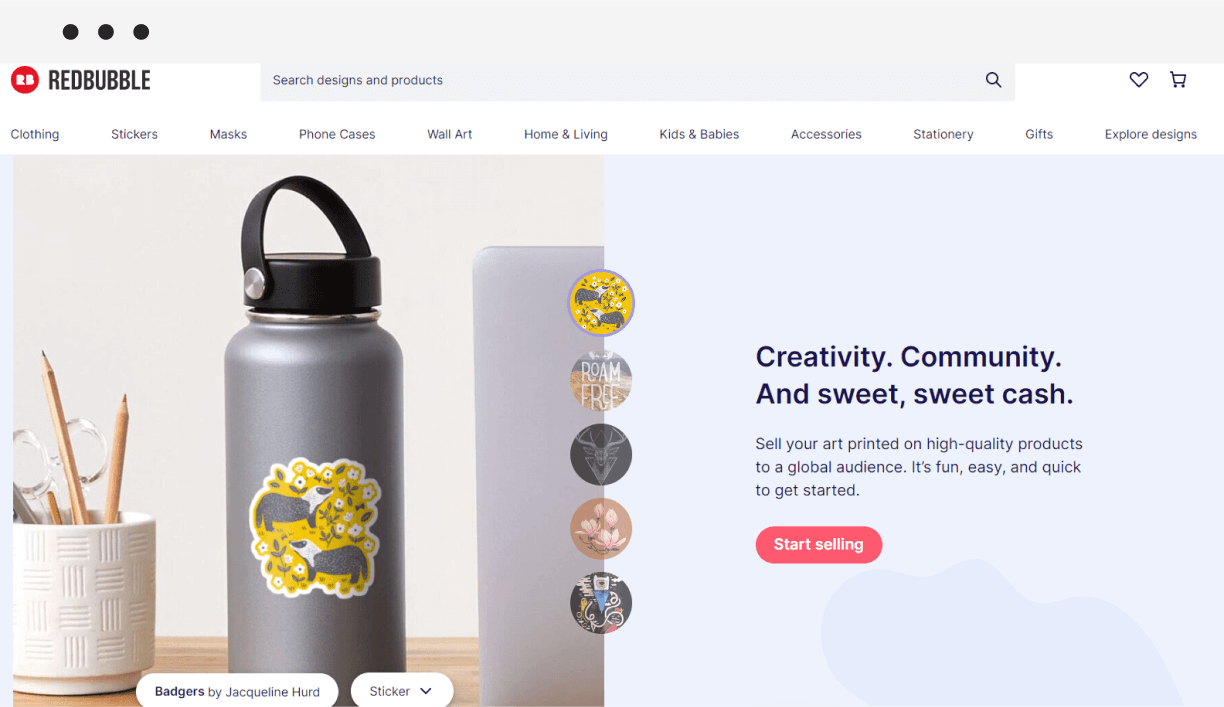
Another big Teespring (now Spring) alternative, Redbubble is one of the biggest print-on-demand marketplaces by traffic alone. The company was first established in Australia and has been around as early as 2006, which is actually why it gets so much traffic. Their platform focuses on independent artists from around the world, giving designers a chance to earn a living from their creativity.
To sell your art on Redbubble, all you need is to open an artist shop and upload your designs. Thanks to their Google Shopping ads, Redbubble is a good option for anyone who isn’t big on either SEO or email marketing.
Target audience: Independent artists and buyers looking to purchase unique designs by artists.
Pros:
- Available in multiple languages
- Currency can be set to match your country of origin’s currency
- Worldwide printing & shipping
- Flexible pricing
- No startup fees
- Google Shopping ads
Cons:
- No possibility to change currency once it’s set
- Limited range of POD products
- Payment threshold of $20
- Earnings for unshipped items carry over to the next month
- Slow payment processing and profit transfer
- Time-consuming upload process
- Copyright infringement issues
- Base prices can change at checkout depending on a number of factors
- No white-label
- Oversaturated market (too tough to get noticed)
4. Zazzle
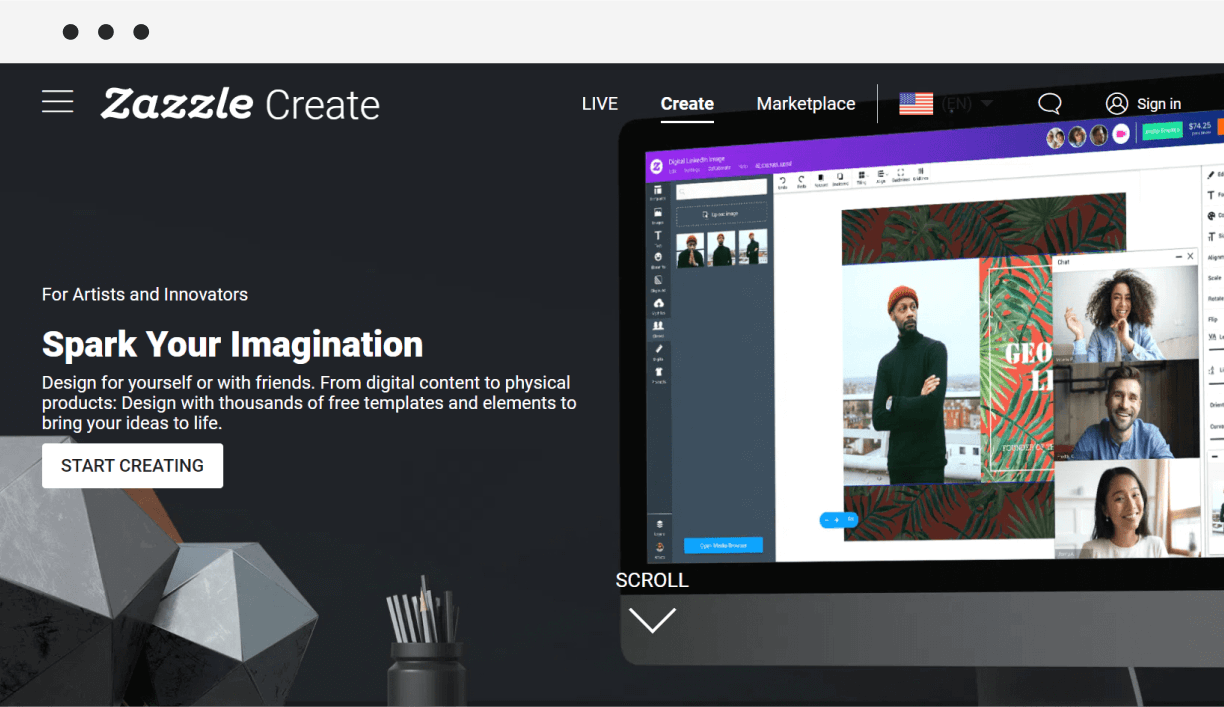
Zazzle is an online marketplace that was founded in the U.S. just a year before Redbubble. And, similarly to Redbubble, it gets quite a lot of traffic. However, that traffic doesn’t actually come from organic search, despite the company being one of the oldest print-on-demand marketplaces. Zazzle caters to people looking for graphic design products. Their sellers are mainly designers, associates, and makers.
With Zazzle as your Teespring (now Spring) alternative, you can either customize an existing product design or create your own from scratch. What makes them stand out from the rest is that they give customers the option to customize designs further. However, Zazzle has a steep learning curve, so if you’d rather not deal with complexity, then this marketplace probably isn’t the best fit for you.
Target audience: Designers or makers looking to use premade design templates; buyers looking for graphic design products.
Pros:
- Possibility to create over 1300 items
- Premade design templates
- Worldwide printing & shipping
- Buyers can customize your items further (optional)
- Zazzle Fan Clubs notifies your customers about new designs
- No startup fees
Cons:
- Oversaturated market (more than 300 million products listed on the site)
- Very slow profit transfer (up to 2 months)
- Payment threshold of $50 for PayPal and $100 for payment by check
- Steep learning curve
- Overwhelming and confusing storefront
- No white-label
- Time-consuming upload process
5. Spreadshop
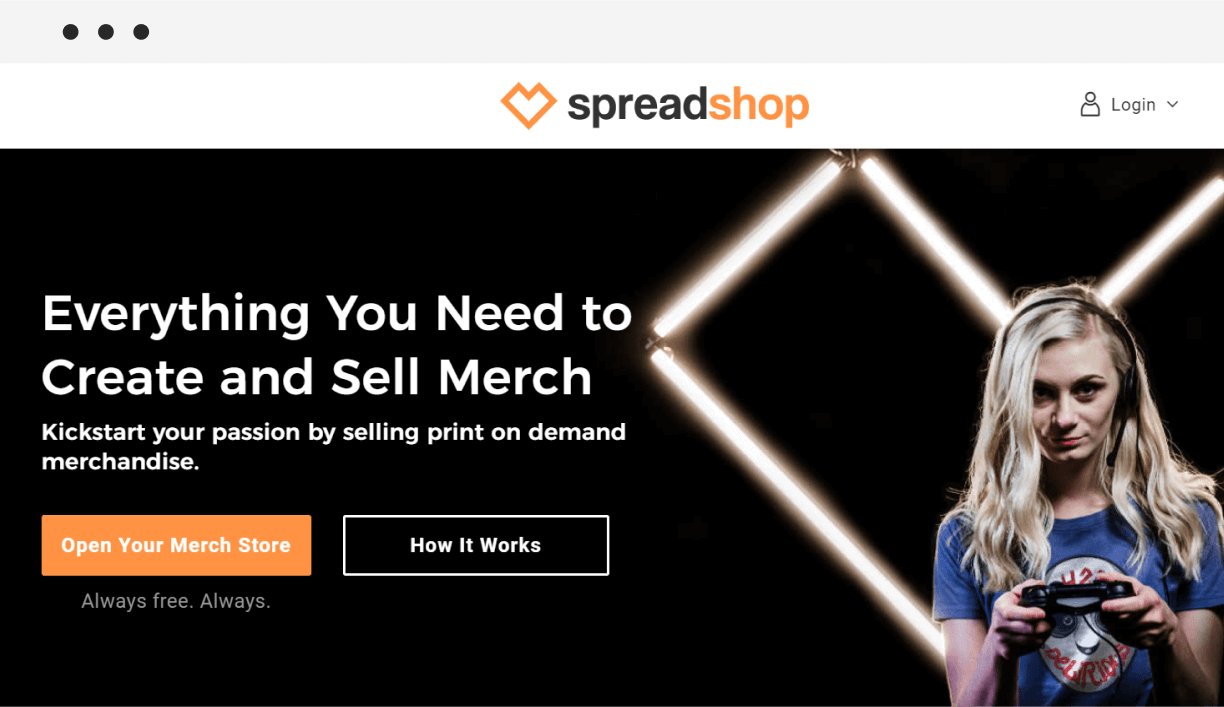
Spreadshop was invented by Spreadshirt, and is, therefore, a lot like the latter, except that it comes with more features and social media channels. Spreadshop targets creators, bands and musicians, community leaders, and brands. They’ve partnered with Placeit to make it possible for shop owners to easily create product mockup photos.
Their online store also includes social media shareable, designed to encourage sellers to spread the word. Plus, they have a blog with useful design and marketing tips, so you won’t have to search the internet for special tips like with most Teespring alternatives.
If you’re looking for more information, go and check out our detailed comparison of Teespring and Spreadshirt.
Target audience: All sorts of creators (e.g. YouTubers), but mainly musicians, community leaders, or established businesses.
Pros:
- No startup fees
- Shop and social media integration
- Possibility to order merch bundles and sell directly to fans
- Access to product mockup photos on Placeit
- Worldwide printing & shipping
- Professional design help (starting at $19.99)
- Helpful blog with tutorials
- Over 100 customizable products
Cons:
- Spreadshop keeps as much as 40% of the base cost
- A U.S. bank account is required for a direct deposit
- International sellers can only receive payouts on PayPal
- Slow product delivery and high shipping costs
- No white-label
6. Merch by Amazon
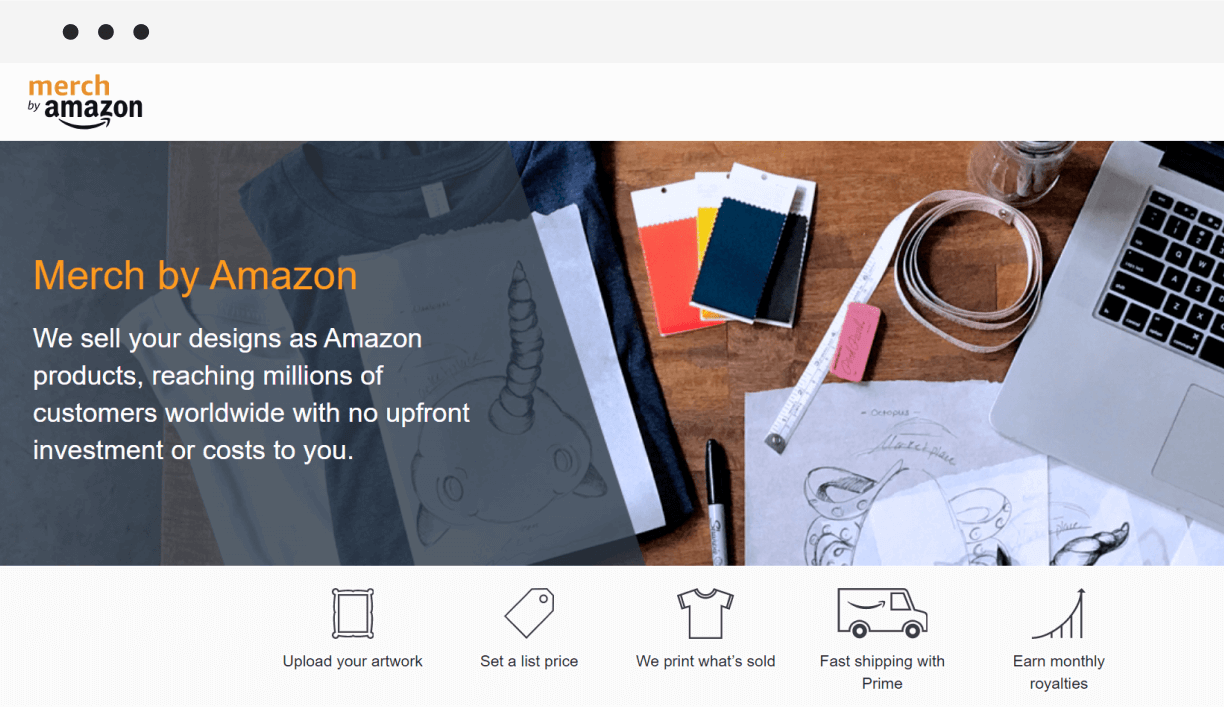
What are some sites like Teespring (now Spring) for other types of apparel? Well, there’s Merch by Amazon. However, it isn’t a standalone website. It’s a print-on-demand program that exists as part of the Amazon Marketplace. Depending on your niche, selling on their marketplace can either make or break your business as their range of custom products is extremely limited. But, despite the limited selection, Amazon has a reputation for being highly profitable due to the sheer volume of traffic they get.
However, what’s often overlooked is the fact that SEO-optimized listings mostly get all the traffic. In other words, even a niche market can be oversaturated because the competition is so fierce. Essentially, to make a profit with Merch by Amazon, you need to know how to optimize your listings as well as use some very eye-catching clothing designs (custom t-shirts, long-sleeved shirts, sweatshirts, and hoodies).
Target audience: Apparel designers or anybody looking to sell clothing and make a profit.
Pros:
- No startup fees
- Potentially profitable due to the high traffic of customers
- Royalties are taken only from shirt sales
- Merch designs are listed on standard Amazon pages
- Fast and reliable worldwide shipping with Amazon Prime
- Customer support
Cons:
- Oversaturated niche markets
- To become a seller, you have to request an invitation and wait for approval
- Approval to start selling may not be guaranteed at all
- Their turnaround on new invite requests varies greatly (approx. up to six months)
- Design theft and copyright infringement issues
- Extremely limited branding options
- Limited range of custom products
- Inflexible pricing system (the minimum pricing is set by Amazon)
- Royalties paid to new sellers are very low
7. Fine Art America

Fine Art America is a bit of a mishmash of an online marketplace as well as an eCommerce platform. In terms of their features, Fine Art America resembles Sellfy more than other Teespring (now Spring) alternatives. But, the difference is that most of their features (like white-label) are only available for premium members. Another major difference is that like most POD sites they don’t do instant payouts. They do, however, provide sales and marketing tools, as well as integrations with multiple sales channels (e.g. you can sell products directly through your own website).
As the name suggests, most of their sellers are there to sell original art or their designs on custom printed products. In addition to that, it’s also possible to sell digital products. While Fine Art America gets a decent amount of traffic due to their SEO game, most of it consists of people who are specifically interested in buying original artwork. So, depending on your niche market, this may or may not work for you.
Target audience: Artists wanting to sell original artwork or designs on customized products; buyers looking for unique pieces of art.
Pros:
- Multiple sales channels and currencies
- Over 100 different products
- Sales and marketing tools
- Possibility to license your artwork on TV or write blog posts
- Worldwide printing & shipping
- No startup fees
Cons:
- Oversaturated with other artists
- Some products have very high base pricing
- 25 listings limit (unless you upgrade to a premium plan at $30/year)
- Their best features (e.g. white-label) are only available for premium members
- Steep learning curve
- Very slow profit transfer process (up to 2 months)
- Weak customer support
8. Society6
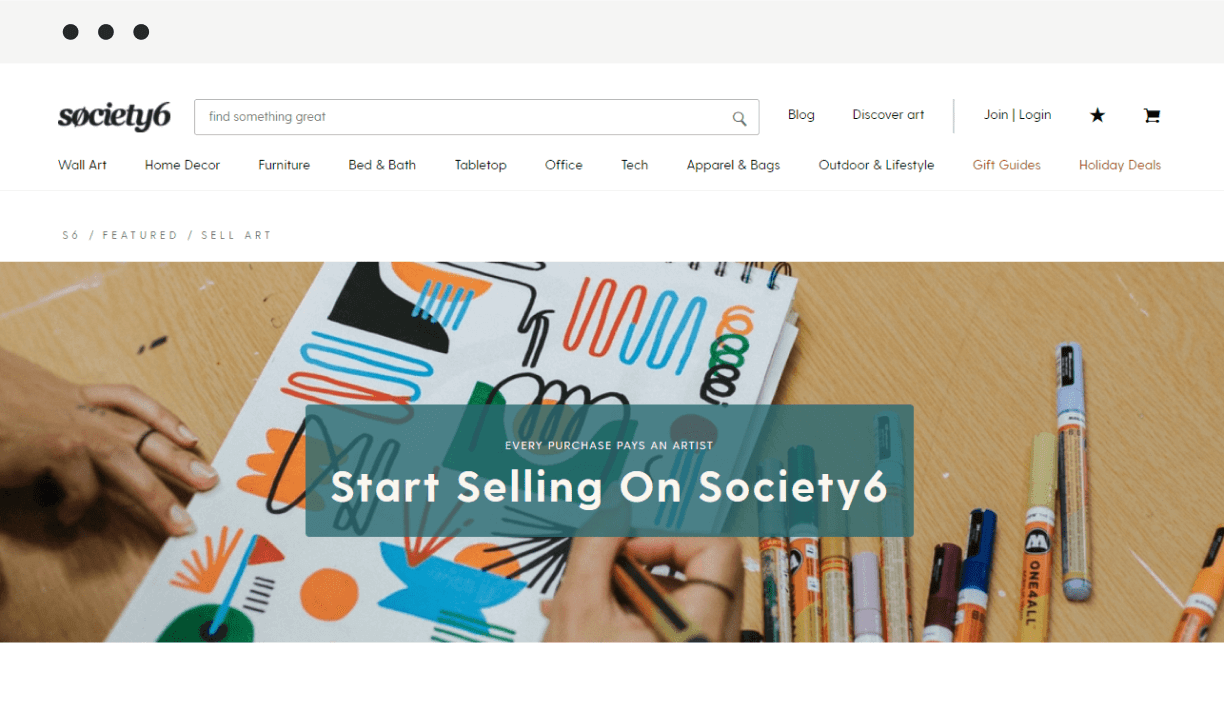
Society6’s marketplace is one of the oldest Spring (formerly Teespring) alternatives in the POD fulfillment industry. Founded in 2009, its main focus is art products (home decor, wall art, and framed prints), but it’s also possible to sell home goods, tech accessories, stationery, and clothing. When you sign up, you need to have a PayPal account to open an artist shop on their marketplace. One of society6’s bonuses is that you can also become an art curator and earn commissions on top of owning an artist shop.
Their big social media presence drives steady traffic to their marketplace. However, you still need to promote your custom products on your own and do all the marketing to stand out from the crowd. Another thing to consider is that society6 has a pretty well-defined aesthetic (the strong focus on art instead of t-shirts), so this may or may not be good news for you depending on your niche or designs.
Target audience: Designers or artists with a specific aesthetic (such as florals, patterns, abstract art, etc.). Not ideal for pop culture merch or graphic design shirts.
Pros:
- Big social media presence
- Possibility to become an art curator and earn commissions
- Customer service
- No startup fees
- 3 different product categories (wall art, home decor and furniture, outdoor and lifestyle)
Cons:
- No white-label
- Complex upload process
- Low product quality
- Slow order fulfillment
- Requires a PayPal account for signing up
- Very slow profit transfer process (up to 2 months)
9. TeePublic
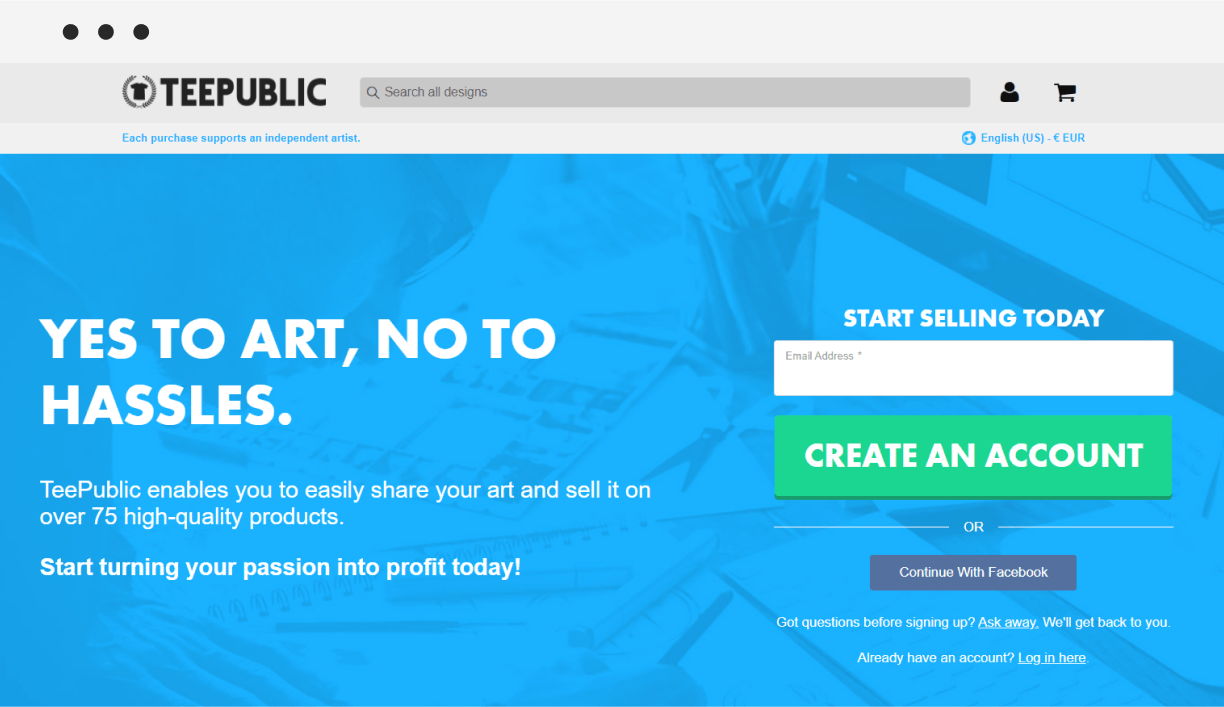
Founded in 2013 and owned by Redbubble, TeePublic is mainly a platform for custom clothing like t-shirts and hoodies. It’s great for selling pop culture and funny product designs. They also happen to have the second-highest level of organic traffic (Redbubble being the first Teespring alternative with high traffic) out of all the POD sites. Although they don’t have as many custom products as Redbubble or Society6, they win when it comes to providing a quick and painless upload process.
What’s also pretty cool is that your customers won’t be able to just buy your custom products, they can also hire you as a designer if they like your designs. This is why most of their sellers are well-established designers. However, if you’re not a designer, you can still make a profit from existing designs by becoming an affiliate seller on their platform.
Target audience: Designers or artists looking to sell pop culture or funny shirt designs.
Pros:
- Possibility to become an affiliate seller and make a profit from existing designs
- Worldwide printing & shipping
- Customers can buy your designs as well as hire you as a designer
- Faster profit transfer than other POD sites (up to a month)
- No startup fees
- Decent organic traffic
- Fast and easy upload process
Cons:
- No white-label
- Limited range of custom products
- Fixed royalties as low as $4 and $2 during sales
- IP and copyright infringement issues
10. Bonfire
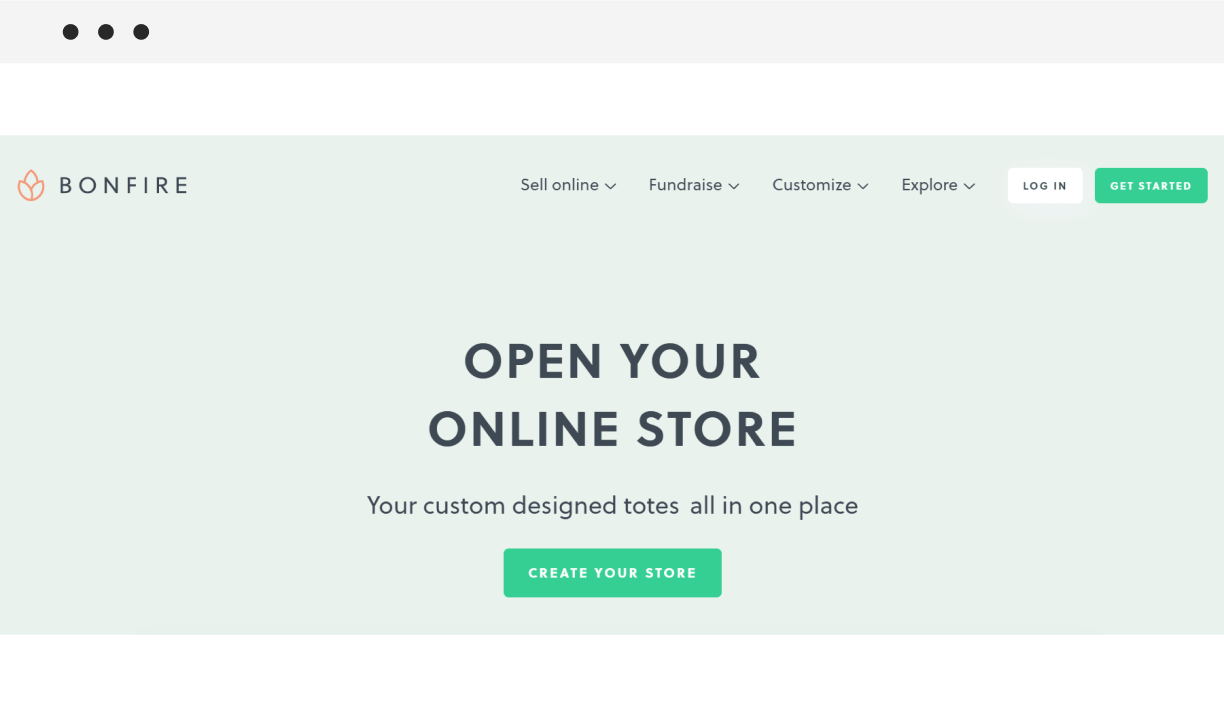
And, last but not least, there’s Bonfire—a newcomer in the world of print of demand and eCommerce. As a matter of fact, here’s a blog post where we thoroughly compare Teesprong to Bonfire.
They started off as a fundraising company back in 2012. In fact, they’re still a fundraising company, but now you can also create custom clothing with the opportunity to do it for a cause. In other words, when you sign up on Bonfire, you can create a t-shirt store or sell online in a campaign. This unique business model has attracted many individuals and nonprofits to their marketplace.
If you’re not a designer, you can still make use of their design tool which includes a limited selection of free graphics. Features like donations will let buyers leave optional tips at checkout. However, there’s a minimum for selling and their storefront customization is pretty limited (no white-label). Still, this could be great for you if you’re particularly passionate about raising money for a cause or creating a campaign page with custom products without opening an actual store.
Target audience: Nonprofit organizations or individuals interested in customized apparel fundraising.
Pros:
- Possibility to sell products for a profit or a cause
- Worldwide printing & shipping
- Design tool includes a limited selection of free graphics
- Buyers can leave optional donations or tips at checkout
- No startup fees
- Social media integration
- Faster profit transfer than other POD sites (still doesn’t beat Sellfy’s instant payouts, though!)
Cons:
- No white-label
- Limited store customization
- Limited range of products
- No marketing tools or SEO (you’ll have to drive traffic to your campaign or store)
- There’s a minimum for selling
- Bonfire takes 8% for processing fees
- Lack of multiple currencies
Over to you
Now, more than ever, it’s time to become your own boss and enjoy the advantages that come with being a business owner: working from home, planning your own schedule, and earning passive income. A side hustle like selling print-on-demand products can be a great way to get started. With the right eCommerce platform, your side hustle could even turn into a full-time merch business. We hope that our article has helped you figure out exactly which one of the many Spring (formerly Teespring) alternatives works best with your business model!
FAQ: Spring (formerly Teespring) alternatives
What is the best Spring alternative?
When it comes to alternatives to Spring (formerly Teespring), Sellfy emerges as a top choice. Sellfy offers a robust platform for selling merchandise, including personalized t-shirts, hoodies, tote bags, mugs, and other custom products. With its user-friendly interface, customizable online store, and integrated payment processing, Sellfy provides a reliable print-on-demand service and is a great alternative to Spring for creators looking to sell merchandise online.
Is it worth selling on Spring?
Selling on Spring (formerly Teespring) can be worth it for some creators. Teespring offers a wide range of products, a built-in customer base, and printing and fulfillment services. However, it’s essential to consider factors such as profit margins, competition, and marketing efforts. Sellfy is a solid alternative with zero transaction fees and features like a customizable storefront, and direct customer engagement, offering creators more control and potentially higher profit margins.
Why is Sellfy the best alternative to Spring?
Sellfy stands out as a superior alternative to Spring (formerly Teespring) for several reasons. Sellfy allows creators to keep 100% of their earnings by offering zero transaction fees. The platform provides a seamless user experience, customizable storefronts, and integrated payment processing. Creators also benefit from direct customer engagement, detailed analytics, and the ability to sell not only merchandise (e.g. mugs and hoodies) but also digital products. Sellfy offers an all-in-one solution for creators looking to maximize their sales and revenue potential.




